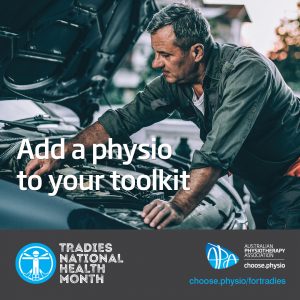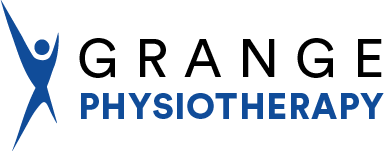
A tradies’ health is their most important tool, yet Australian tradies experience some of the highest rates of injury and time off work compared to other workers. In fact, 3 in 5 serious workplace injuries involve a tradie, despite tradies making up only 30 percent of the Australian workforce. The Australian Physiotherapy Association is encouraging all tradies, their employers and families to think about their health and take a few simple steps to prioritise their wellbeing at work.
Back pain can be both painful and frustrating. It is also very common. Research indicates persistent low back pain is due to a range of factors including poor disc hydration/health, stiff spinal segments, poor muscle control, degeneration of the spine, nerve compression and is influenced by psychosocial issues. This may lead to not enough or too much movement between the vertebrae segments thus causing pain. If this is the case then specific exercises aimed at improving normal spinal range and function will improve the back’s function and decrease pain. These exercises involve both back muscles and abdominal muscles but play an entirely different role to the abdominal muscles we use with exercises such as sit-ups. In fact, there is a theory that these type of exercises such as sit-ups can actually cause an increase in chronic pain because the wrong type of muscles are being used and they are unable to stabilise and give the support necessary. The muscles that stabilise the spine are the lower abdominal muscles, which include the transverse abdominous, and the internal oblique muscles. These muscles can be felt in the lower tummy area just below the front hipbones felt through the lower tummy. The simplest way to exercise them is to try to gently pull in these muscles without tightening the upper abdominal muscles. This type of exercise then becomes incorporated with activities of daily living so that it becomes an unconscious action involved in posture.
Before you start on an exercise program ensure you get a full assessment of your problem, as instability or weak muscles may not necessarily be the cause of your problem. Your posture and spinal range need to be assessed. The lower abdominal muscles need to be tested in specific positions to see how strong they are. You will need an individually planned exercise program incorporating both strength exercises and stretches. On top of all that you need to stick with your exercise program as initially, progress can be slow. The longer the problem has been, the slower the rehabilitation can be. But persist. With a good physiotherapist, your pain can be managed in most cases without surgery or medications.
At Grange Physiotherapy we specialise in low back pain and use a variety of techniques including Acupuncture, mobilisation, and exercise to regain range of movement in the spine and strengthen the core muscles which support the spine. Our Clinic offers Clinical Pilates, Hydrotherapy, remedial massage therapy and gym classes to combat low Back pain with great results.

